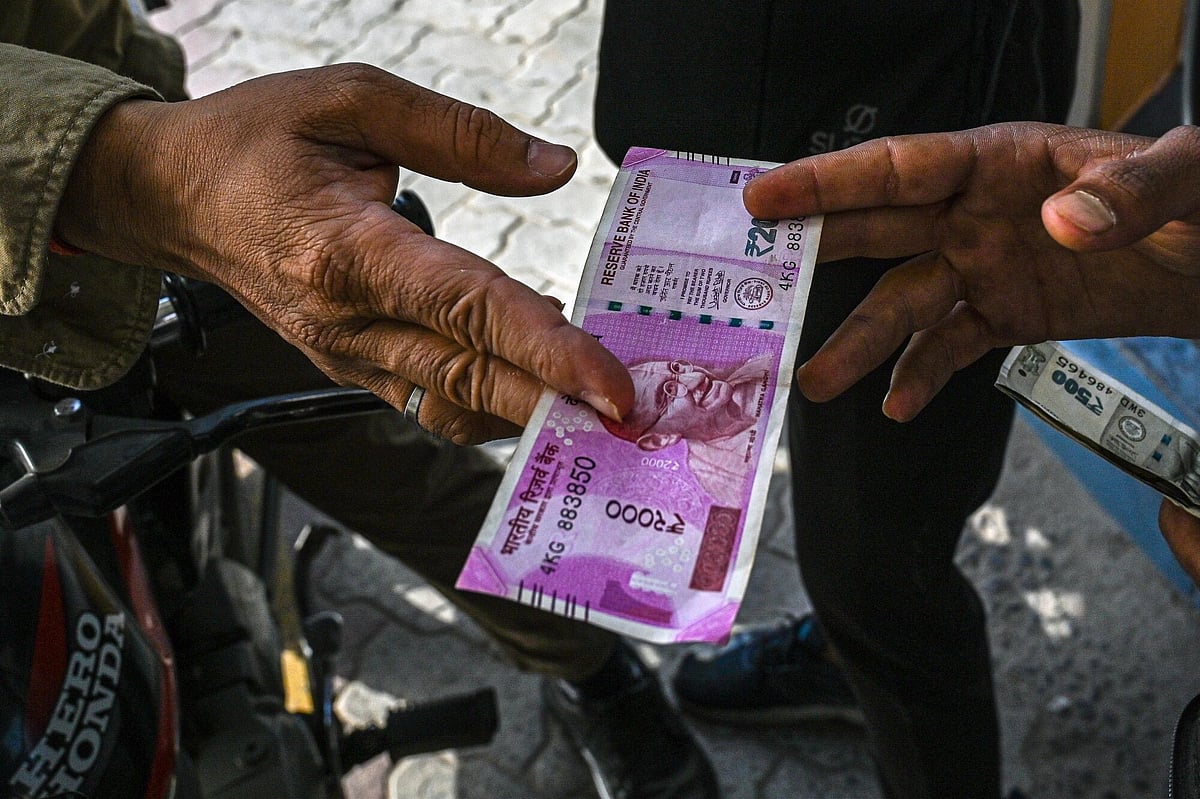Remitting UAE expats gain big as Indian rupee stays at historic lows
Currency recently touched 89.48 per US dollar, 24.26 vs Dh1, its weakest reading on record

Dubai: The Indian rupee’s steep drop recently has opened one of the strongest payout windows in years for UAE-based Indian workers, students and business owners sending money home.
The currency touched 89.48 per US dollar on November 21, its weakest reading on record, after months of pressure from US tariffs, foreign investor exits and tighter global liquidity. (Check latest rates here)
For residents earning in dirhams — pegged to the US dollar — the shift has produced an unusually favourable exchange rate that many households say they hadn’t seen coming this year.
Remittances routed through UAE exchanges now convert into materially more rupees, prompting a wave of early transfers as families move to capitalise before conditions change.
UAE expats see immediate impact
Indian nationals form the UAE’s largest expatriate community, and remittances from the Emirates remain a critical financial lifeline for states including Kerala, Telangana, Uttar Pradesh and Maharashtra.
With the rupee under sustained pressure, a Dh1,000 transfer fetches more rupees today than at any point this year, easing burdens tied to school fees, home loan instalments, medical bills and monthly household spending.
Small business owners remitting profits say the rate has created a rare cost advantage at a time when local operating expenses are rising.
For many regular remitters, the currency’s weakness has become a practical budgeting tool rather than a market event.
Why the rupee is under strain
This year’s decline stems from an unusual confluence of global and domestic drivers.
The US imposed aggressive tariffs on most Indian exports, undercutting trade expectations that had lifted the currency earlier in the year.
Foreign investors have withdrawn nearly $16.3 billion from Indian equities, citing tariff uncertainty, stretched valuations and concerns about earnings momentum.
India’s central bank, the RBI, has sold more than $30 billion in reserves since July in intermittent attempts to slow the slide — but the November drop signalled a moment where officials chose not to intervene.
RBI’s new posture and IMF signals
The RBI maintains that it acts only to curb volatility, not defend a specific rate. Its new governor, appointed in December 2024, has taken a more hands-off approach than his predecessors.
The IMF added new clarity on November 26, classifying India’s exchange-rate regime as a “crawl-like arrangement”, suggesting the currency is allowed to adjust gradually in line with inflation differentials.
Even so, the central bank has stepped in when moves have threatened to disrupt markets — including mid-October, when it pushed back as the rupee approached 89 per dollar.
Economists warn that sustained defence around similar levels could prove difficult if trade deficits widen or portfolio outflows persist.
Why the rupee stands out
The rupee’s slide looks sharper because it comes at a time when the US dollar itself has softened, and several Asian currencies — including the Thai baht and Taiwan dollar — have strengthened.
Those economies have faced fewer US trade penalties and continue to run current account surpluses, insulating their currencies. India, by contrast, carries a persistent current account deficit and imports the bulk of its oil, fertilisers and electronics — costs that rise when the rupee weakens.
The RBI governor has argued that depreciation is consistent with India’s inflation gap versus advanced economies, but traders see ongoing vulnerability until tariff issues stabilise.
Advance transfers as rates surge
Exchange houses across the Emirates report a clear uptick in remittances since mid-November. Salaried workers say they are sending larger portions of monthly income, while families supporting relatives have accelerated transfer cycles to take advantage of stronger returns.
Some residents have pulled forward big-ticket payments — including education fees, home renovations or loan settlements — anticipating that this exchange-rate window may not last.
Many say they are switching from timing the market to securing certainty, especially with US-India trade negotiations still unsettled.
What a prolonged weak rupee means
A soft rupee creates immediate benefits for UAE remitters but carries economic trade-offs within India.
Households receiving money enjoy higher purchasing power, and remitters gain a larger buffer for savings or investment commitments. But the downside is rising import costs inside India, which push up prices of fuel, fertilisers, consumer electronics and industrial inputs.
The World Bank, which reported India’s record $137 billion in remittances last year, says the currency’s weakness amplifies near-term inflows — though long-term effects depend on whether inflation eats into household gains.
What to watch in the weeks ahead
The rupee sits at a critical level heading into December. Market reactions will hinge on progress in US-India tariff discussions, the RBI’s tolerance for further volatility, and how global investors position around US interest-rate expectations.
For UAE expats, the question is straightforward: Does the rupee have further room to fall — or is this peak advantage? Right now, the rate offers a rare windfall. Whether it lasts depends on policy decisions far beyond the Emirates, but remitters appear unwilling to wait.
Sign up for the Daily Briefing
Get the latest news and updates straight to your inbox
Network Links
GN StoreDownload our app
© Al Nisr Publishing LLC 2025. All rights reserved.
